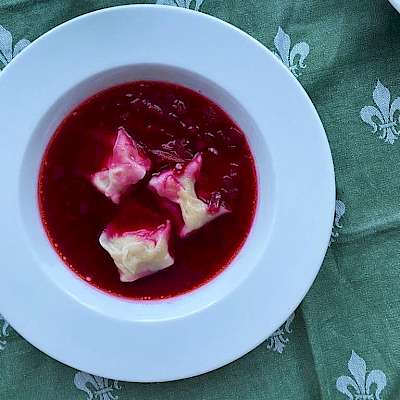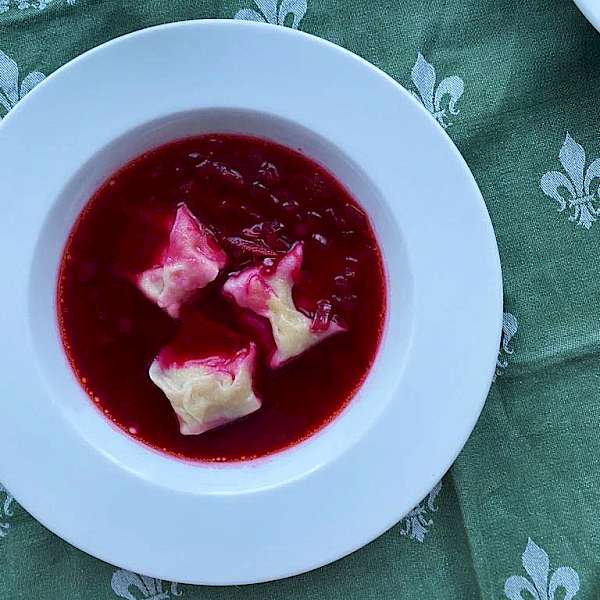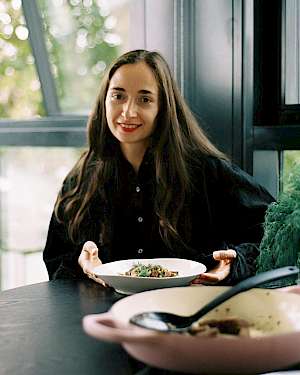The region of Eastern Europe is an intricate tapestry woven out of a thousand threads. Geography, religion, politics and culture come together to produce a diverse landscape of an unparalleled richness that is expressed nowhere better than in the food of the region.
Roughly encompassing a territory from the Ural Mountains in Russia to the East and the banks of river Elbe to the West, the region stretches out south to the Black Sea and goes all the way up north to the Baltics. While it’s impossible to put a finger on a specific birth date of Eastern Europe, its identity began to shape as early as the 700s.
Crossroads of cultures
It’s mind boggling trying to imagine how many tribes and communities have crossed that area, a highway between Asia and Western Europe, settling in the region and leaving their mark on its food culture. Slavs, Jews, Tatars and Roma are some of the most prominent communities of Eastern Europe whose food traditions have always existed in a dynamic dialogue. Hearty soups and stews, plump pies and dumplings, punchy ferments and pickles - these are the key notes in a melody we all sing together.
My own family is made up of lineages from Russia, Ukraine, Poland, Belarus and the Ashkenazi Jewish community. In a way it is emblematic of an average Eastern European household, which marries a whole host of histories, regions and identities, and celebrates this heritage at the kitchen table.
Embracing the cold season
While it might be a little short sighted identifying Eastern European cuisine solely in relation to its cold winters, the food born out of this geographic specificity deserves all the praise and attention. To me some of the best dishes of the colder seasons are soups and dumplings, and this is why I particularly love recipes that combine the two. Serving dumplings in a soup is not a unique Eastern European tradition. Indeed, both the Chinese and the Italian cuisines have numerous dishes of that kind, and are in fact thought to have influenced the Eastern European culinary classics. The jury is still out on the exact origins of dumplings in the region, some sources say they came with the Italian Jews who settled in the region escaping persecution around the 14th century. Others suggest it were the Tatar Mongol nomads who brought the custom along a few centuries earlier. Either way, dumplings served in soups and broths are an inseparable part of both the Slavic and the Ashkenazi food culture.
Christmas Eve traditions
In the Slavic communities, in Poland and Ukraine, in particular, a treasured food ritual is that of serving mushroom dumplings in a clear beetroot broth on Christmas Eve. While many know and love Polish pierogi, the plump half moon shaped beauties also known as varenyky in Ukraine, the dumplings served on Christmas Eve are much smaller and shaped similarly to the Italian tortellini. They are called vushka in Ukraine and uszka in Poland, which means “little ears” in both languages.
Ashkenazi cuisine has its own equivalent called Kreplech, their shape is not as clearly defined as that of their Slavic neighbours, they can be served as large triangles or as vushka. Served in broth or fried in butter, their filling plays a symbolic part in the religious narratives of the holidays during which they are served - Yom Kippur, Sukkot and Purim; though this dish is also eaten on other festive occasions such as Rosh Hashanah (the Jewish new year) and Hanukkah (which often coincided with Christmas).
Christmas in Eastern Europe is celebrated on different dates depending on which branch of Christianity each community comes from; there’s the Catholic Christmas on the 24-25th of December (that coincides with the festivities in Western Europe) and there’s the Orthodox Christmas on the 6-7th January which follows the Julian calendar (similarly to Christians in Ethiopia, the Balkans and the Caucasus).
Traditionally, the festivities on Christmas day are always preceded by a long fast, where one observes a vegan diet, and the fast is broken as soon as the first star is spotted on Christmas Eve with a special feast, known as Wigillia in Poland or Sviat Vechir in Ukraine. Many go to church for a midnight mass, to bless some of the food, and return home to a bountiful table. Humble nourishing food would be the bounty, nothing too expensive or extravagant, but even the simplest of ingredients cleverly put together, would make your heart and stomach sing!
The meal would always begin with Uszka and be followed by a selection of dishes, totalling 12, as a symbol of the Apostles. The recipe I share here is my own creation, inspired by the vegetarian Christmas Eve tradition and it marries elements of both Slavic and Ashkenazi recipes.


